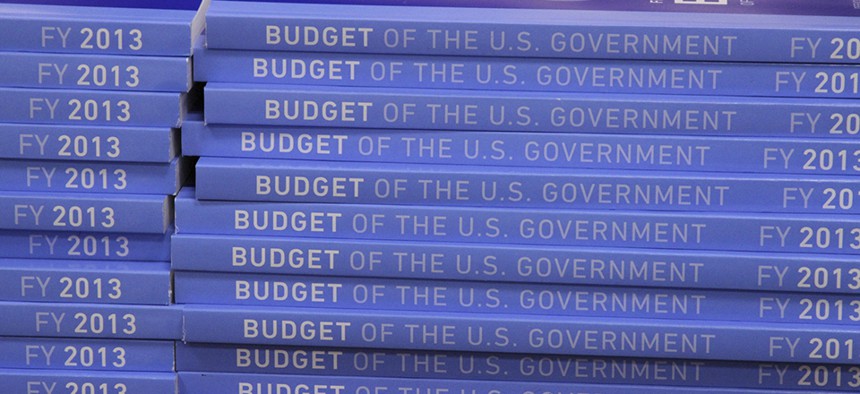
The pomp and circumstance of budget day has gone back many years. GPO file photo
The Choreography of Budget Day
Months of planning, repeated testing, and a whole lot of paper go into an annual Washington ritual.
At 7 a.m. Monday, the Government Publishing Office's trucks will be raring to go, filled with thousands of copies, totalling millions of pages, of a new publication precious few have been allowed to see: a hard-copy outline of President Obama's hopes and dreams.
By 8 a.m., print versions of Obama's fiscal 2016 budget submission will be at the Office of Management and Budget and on Capitol Hill, where cameras will await—an annual only-in-Washington media ritual.
GPO's digital team, meanwhile, will be standing by, watching the clock tick to 11:30 a.m., the moment when the budget can enter the public domain electronically. It'll take them about 10 seconds to move the files from an internal test environment into a format the world can see.
Crafting the proposed budget involves countless meetings and intense analysis, a process that starts almost as soon as the last one ends. Once it's written—the proposed money allocated down to the dollar—it's turned over to GPO, which is charged with producing the expansive document and its appendix, analysis, and accompanying historical tables.
"We know when it's coming [every year]," Ric Davis, GPO's chief technology officer, said, "but at the same time—and even though we know what we're doing, and we know the process and generally the same people are here—there is still a lot of work involved just to make sure that we get it absolutely right."
Last Monday, OMB gave the budget's digital files to GPO, transmitting it using a secure channel to ensure the budget isn't tampered with in any way, Davis said. The two agencies work in tandem to review what's been transferred, double-checking all is the same.
But the document isn't just put on the site as is. That wouldn't be user-friendly. Instead, it's compiled into volumes and chapters, as the digital team creates the look and feel of how the budget will appear to the public on the website, adding answers to frequently asked questions: What is the budget? Who is the author? How many pages is it?
Then the testing of the digitized document begins. The team puts the budget up in a test space, intensely scrutinizing the product because they have a deadline they just can't miss: "As soon as we get the green light for releasing it, we're ready to make it available," Davis said. And the digital budget goes online, just as it has since fiscal 1996, available on GPO's federal digital system, www.fdsys.gov.
The clicks begin with an estimated 60,000 views online the first day of the document's release and likely another 25,000 from the accompanying mobile app that GPO first created for the fiscal 2013 budget, GPO spokesman Gary Somerset wrote in an email.
GPO also converted the material into three books. There are copies for Congress, the GPO retail and online bookstores, and OMB—and special leather-bound books for the president, said John Crawford, GPO's managing director of plant operations.
The book consisting of the fiscal 2016 proposed budget went to the printing press Monday evening and was completed midweek; the two others books—the appendix and the analytical perspective—were done by the weekend. Then they were combined into shrink-wrapped sets and boxed, with Saturday crews charged with prepping them for delivery.
That's 15,000 copies in total of a roughly 150-page budget; a nearly 1,500-page appendix; and a roughly 400-page analytical perspective, all published in about a work week. And a CD-ROM that also includes the document's historical tables.
The printing process used to take roughly five times longer, with employees hand-feeding the materials into machines. "It was labor-intensive, trust me," Crawford said. "Hundreds and hundreds of people."
When the budget's four volumes were print-only, about 100,000 total copies were produced, but that number decreased once the Web gained traction. And in this digital age, it takes the manpower of fewer than 100 employees to produce the books, a decrease that stems from the 1990s purchase of a printer that cuts out the many tedious steps.
"It's done so much better," Crawford said, "and so much faster."







